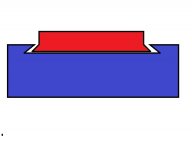JBCGUNS
Aluminum
- Joined
- May 9, 2012
- Location
- Sydney, Australia
Hi gents,
I have a rem 700 and two sako L461 actions with pitted boltfaces I intend to rebarrel within the next couple of weeks.
Is there anyone out there an opinion on the maximum tolerance for the Bolt face to back of the extractor dimension before extraction starts to play up.?
I'm guessing this will vary between makes and models.
JB
I have a rem 700 and two sako L461 actions with pitted boltfaces I intend to rebarrel within the next couple of weeks.
Is there anyone out there an opinion on the maximum tolerance for the Bolt face to back of the extractor dimension before extraction starts to play up.?
I'm guessing this will vary between makes and models.
JB


